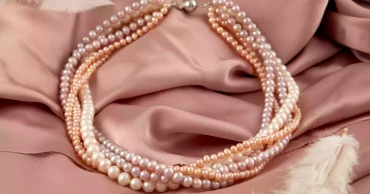Seawater Pearl
Freshwater Pearls: All You Need to Know
Pearls have captivated human beings for centuries with their timeless beauty and elegance. Renowned for their lustrous glow and delicate allure, pearls have become a symbol of sophistication and luxury. These natural treasures, formed within the shells of mollusks, have gained immense popularity as cherished ornaments. From ancient civilizations to modern fashion trends, pearls have adorned people's necks, ears, and wrists, enchanting with their exquisite simplicity. Their enduring popularity is a testament to their enduring charm and enchantment.
How Pearls are Formed Naturally?
Saltwater pearls, as the name suggests, develop within oysters in saltwater environments. When an irritant, such as a grain of sand, finds its way into a mollusk, it secretes a luminous substance called nacre, or mother of pearl. This liquid gradually coats the irritant and forms a particle, bead, or tissue within it. Thus, creating layers over many years leads to the formation of the enchanting, creamy-hued pearls adored for their unique shine and shapes.
Pearls naturally form in the oysters in the ocean. However, pearls can also be intentionally cultivated in freshwater water environments under controlled conditions. Natural pearls are rarer and often more valuable and occur less frequently than cultured pearls.
Read more: Gold Buyer's Guide: Know the types, colors, karats of the precious metal
As a result, cultured saltwater pearls exhibit a smoother and rounder appearance, often presenting a classic spherical shape.
2 years ago

